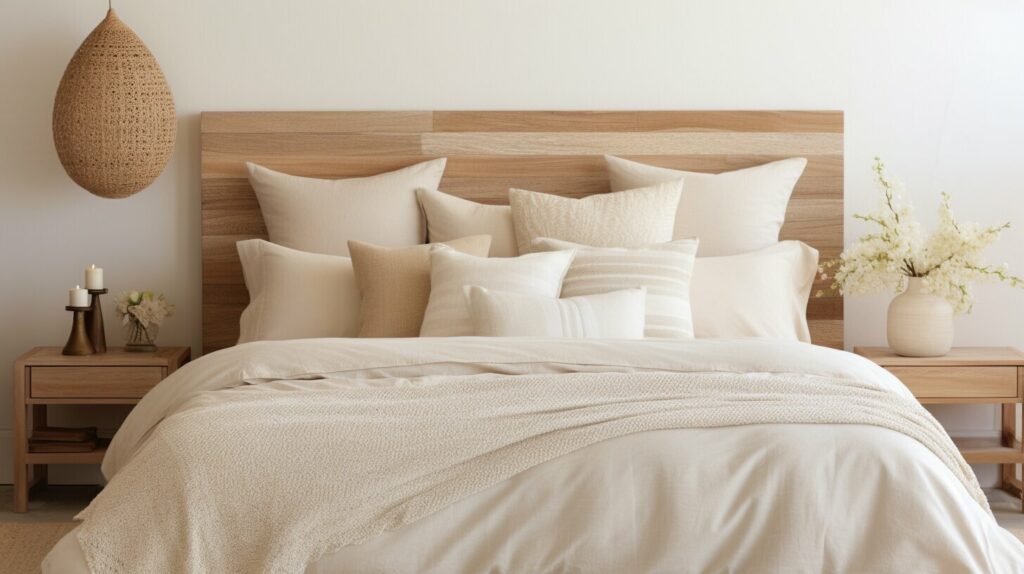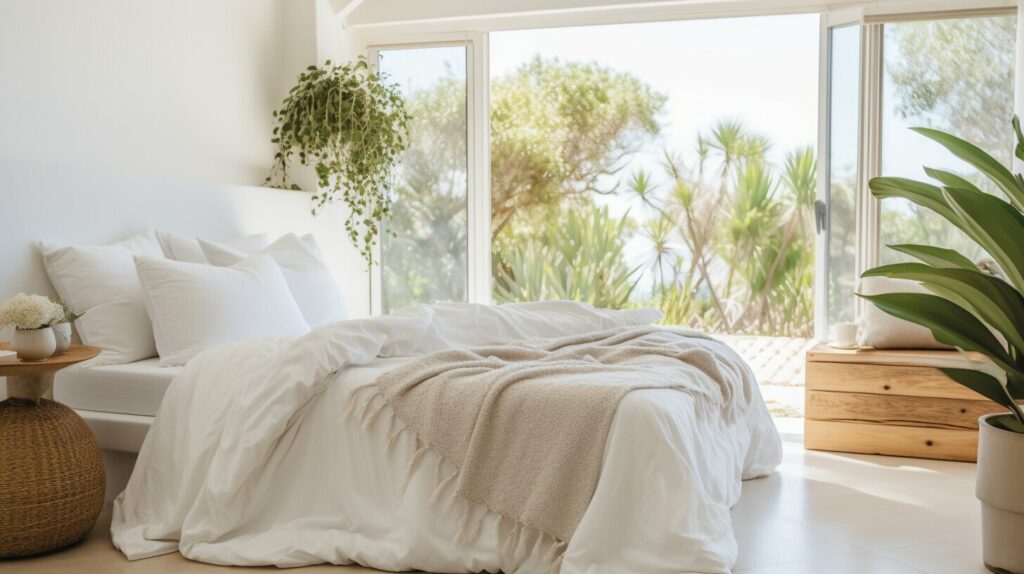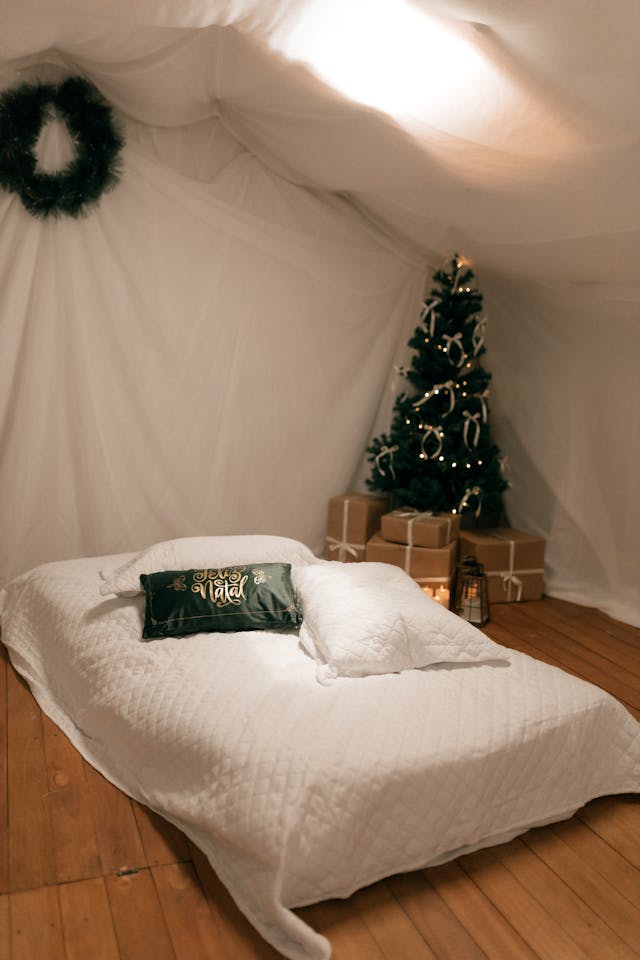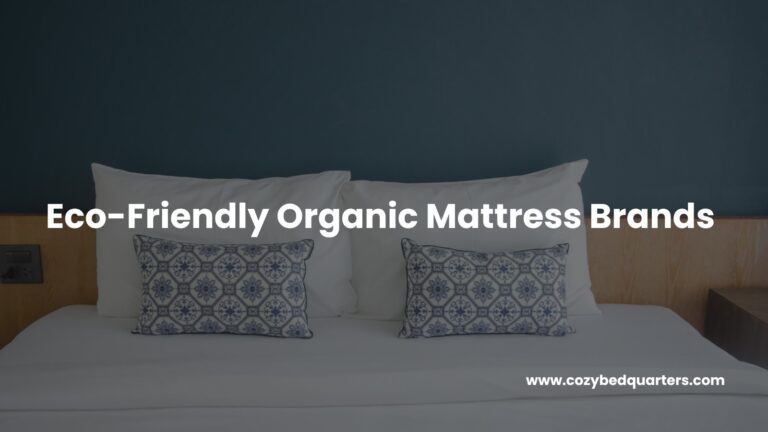Bedding Accessories Pillows Toppers (Updated 2025)
Bedding accessories pillows toppers can upgrade comfort, cooling, and support fast—often for far less than replacing your mattress. Below, you’ll find quick picks, how to choose the right topper and pillow by sleep style, eco-certified materials, and care tips so your setup stays fresh. Expect clear guidance, sustainable options, and links to trusted resources.
Key Takeaways: Bedding Accessories Pillows Toppers
- Bedding accessories pillows toppers boost comfort, align the spine, and refresh older beds without a full mattress swap.
- Pick pillows by sleep position: side = higher loft, back = medium, stomach = low.
- Cooling materials—latex, wool, breathable cotton, and advanced foams—help manage heat and night sweats.
- Prefer eco and safety labels: CertiPUR-US®, GREENGUARD Gold, GOTS, and OEKO-TEX.
- Protect, rotate, and air out pieces to extend lifespan and maintain hygiene.
Why Invest in Bedding Accessories Pillows Toppers?
Bedding accessories pillows toppers aren’t just décor; they fine-tune firmness, reduce pressure on shoulders and hips, and improve airflow for deeper sleep. A targeted topper can soften a too-firm bed, while the right pillow keeps your neck neutral so muscles can relax overnight.
For room-size and support balance, see how bed size affects sleep quality in our guide: How Bed Size and Sleep Quality Are Connected.

How to Choose the Right Mattress Topper (Answer-first)
Match the topper to your problem: soften firm beds, add buoyant support, or improve cooling—then pick thickness and material.
- Too firm? Choose memory foam (2–3″) for plush contouring and pressure relief.
- Sleep hot? Try ventilated latex, open-cell or gel-infused foam, or moisture-regulating wool.
- Eco focus? Natural latex and wool are durable, supportive, and less hospitable to dust mites.
For deeper shopping help, see our internal guide to choosing toppers: Enhance Your Sleep with the Right Mattress Topper, and compare seasonal comfort options here: Comforter Guide for Every Season.
Independent testing roundups are helpful when comparing current models: Best Mattress Toppers (Sleep Foundation).

Layering Pillows for Ultimate Comfort (Answer-first)
Start with one primary pillow that fits your sleep position, then add a slim helper or decorative pillow for fine-tuning and style.
- Side sleepers: a higher-loft foam or latex pillow fills the shoulder gap.
- Back sleepers: medium loft supports without pushing the head forward.
- Stomach sleepers: low loft keeps the neck neutral; a soft down-alternative often helps.
A common fix: side sleepers with neck strain can switch to a medium-firm, high-loft memory foam pillow and add a thin knee pillow—many feel relief quickly. Learn how to build that “designer layered” look with our step-by-step: How to Layer Bedding.
For lifespan guidance, most experts suggest replacing pillows about every 1–2 years: How Often to Replace Pillows (Sleep Foundation).

Materials & Certifications That Matter (Answer-first)
Shop materials for feel and longevity, then confirm safety with recognized labels. That combo protects comfort and indoor air quality.
- CertiPUR-US® foam: verified for content and emissions—useful for memory foam toppers.
- GREENGUARD Gold: low chemical emissions for better air quality.
- Organic fibers: look for GOTS or OEKO-TEX on covers and fills.
Want a quick fabric refresh? This overview is handy for cooling vs cozy sheeting: Percale vs Sateen vs Linen (Parachute). For general bedding fabrics, see Temperature-Regulating Bedding and Organic Bedding Benefits.

Top Picks Snapshot (Reader Favorites, Answer-first)
Match material to need: cooling gel foams for hot sleepers; buoyant latex for breathable lift; plush featherbeds for cloud-like sink.
- Cooling gel memory foam topper: pressure-relieving contour with a cooler hand for hot sleepers.
- Natural latex topper: buoyant, breathable, and naturally resistant to dust mites and mold.
- Downtop featherbed: plush surface for a luxe, sink-in feel (best paired with supportive pillows).
For lab-tested comparisons, browse Sleep Foundation’s topper picks and their testing methodology. For cool-sleeping fabrics, Parachute’s guides clarify weave vs. fiber feel: Bed Sheets Guide.
Care & Maintenance Tips (Answer-first)
Protectors, regular washing, airing out, and rotation extend the life of bedding accessories pillows toppers.
- Use breathable protectors on pillows and toppers; wash covers regularly. BHG explains pillow-washing methods and cadence: How to Wash Pillows (BHG).
- Air out foam and latex toppers monthly; rotate quarterly for even wear.
- Plan to replace pillows every 1–2 years to maintain support and hygiene: Pillow Shopping & Lifespan (Sleep Foundation).
- Pair with season-smart bedding; see our comforter guide for easy swaps.
Eco-Friendly vs. Conventional Bedding (Answer-first)
Eco-friendly choices aim to reduce emissions and chemicals while improving durability; conventional options can be budget-friendly but vary in sustainability.
- Eco-friendly picks: organic cotton, TENCEL™ lyocell, natural latex, responsibly sourced down; often certified by GOTS, OEKO-TEX, or GREENGUARD.
- Conventional picks: polyester microfiber and standard poly foams; lower upfront cost but may retain more heat and shed microfibers over time.
- Comfort tradeoffs: organic and sustainable bedding can breathe better and last longer; advanced foams may offer superior pressure relief.
To balance comfort and impact, combine a breathable topper with eco-conscious sheets and an organic bedding duvet cover.
Environmental Impact: Carbon, Water, Biodegradability (Answer-first)
Materials differ widely. Natural latex and organic cotton typically avoid certain petrochemical inputs; wool manages moisture without synthetics. Conventional polyester blends may be durable but aren’t biodegradable. When possible, choose products with transparent certifications (GOTS, OEKO-TEX, GREENGUARD) and long warranties to reduce replacement cycles.
Buyer’s Guide: Certifications & Shortlist (Answer-first)
Use labels to verify claims, then shortlist by feel and care needs.
- Foam toppers: look for CertiPUR-US® (content & emissions) and consider covers with OEKO-TEX.
- Latex toppers: seek GOLS/GOTS and GREENGUARD Gold for low emissions.
- Textiles: OEKO-TEX STANDARD 100 or GOTS for organic fibers.
Want a quick materials primer from a design-forward source? See Parachute’s weave overview: Sateen vs. Percale basics.
FAQ
- What are the benefits of using a mattress topper?
- A quality topper boosts comfort, fine-tunes firmness, and can extend mattress life by reducing wear on the most-used surface.
- How often should I replace my pillows?
- Plan on every 1–2 years; swap sooner if the pillow feels flat, lumpy, or causes neck strain. See guidance from Sleep Foundation: Pillow Replacement.
- Are natural toppers worth it?
- Yes. Latex and wool are durable, breathable, and often hypoallergenic—great for eco-conscious sleepers who run warm or prefer low-maintenance materials.
- Which certifications should I look for?
- For foam, look for CertiPUR-US; for low emissions, GREENGUARD Gold; for natural fibers, GOTS or OEKO-TEX.
Final Thoughts
With the right bedding accessories pillows toppers, you can upgrade comfort, cooling, and support in a single afternoon. Start with your biggest pain point—temperature, pressure relief, or neck alignment—make one smart change, then build from there. For more cozy, research-backed guides, explore Cozy Bed Quarters.























